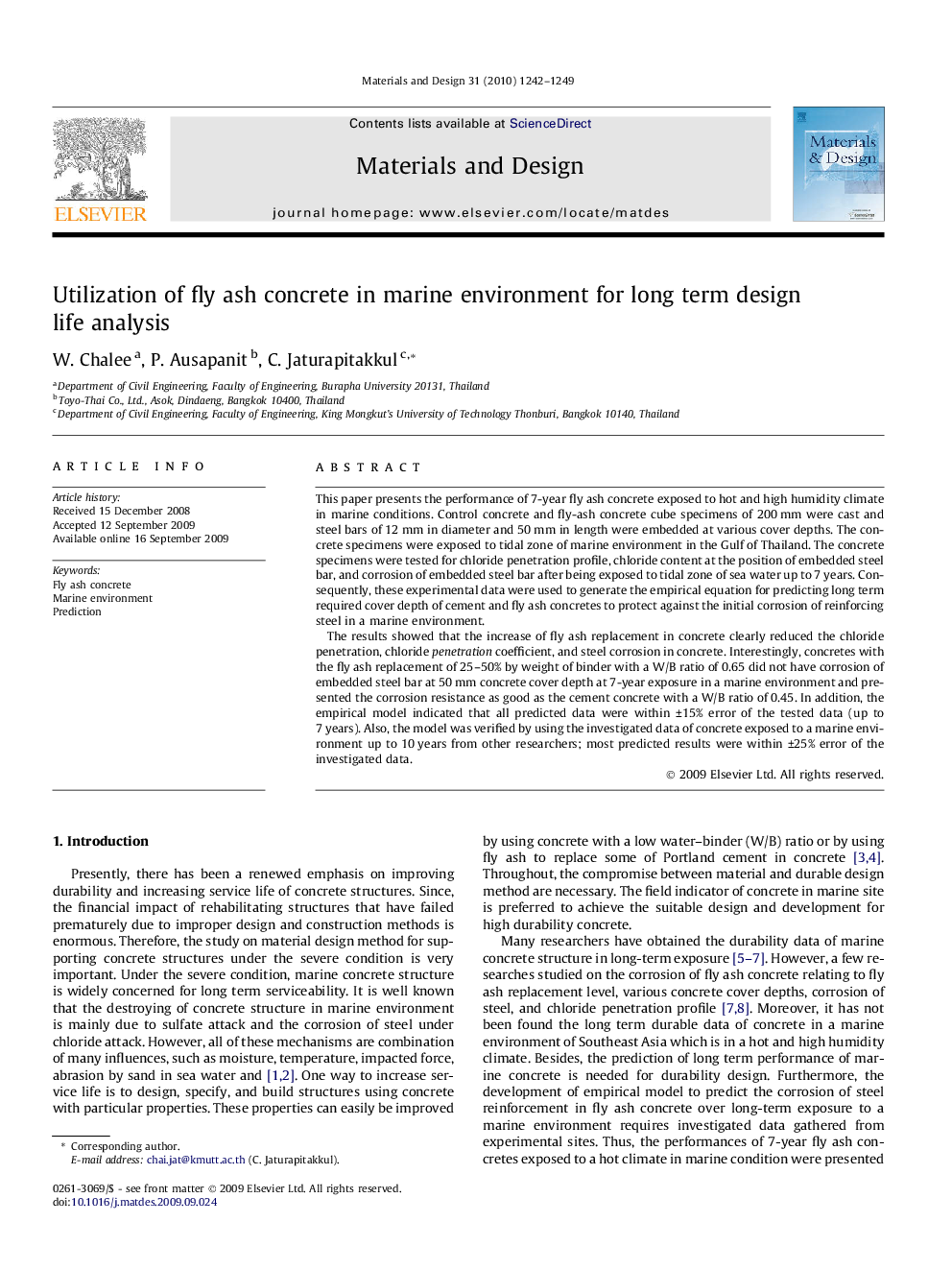| Article ID | Journal | Published Year | Pages | File Type |
|---|---|---|---|---|
| 832490 | Materials & Design (1980-2015) | 2010 | 8 Pages |
This paper presents the performance of 7-year fly ash concrete exposed to hot and high humidity climate in marine conditions. Control concrete and fly-ash concrete cube specimens of 200 mm were cast and steel bars of 12 mm in diameter and 50 mm in length were embedded at various cover depths. The concrete specimens were exposed to tidal zone of marine environment in the Gulf of Thailand. The concrete specimens were tested for chloride penetration profile, chloride content at the position of embedded steel bar, and corrosion of embedded steel bar after being exposed to tidal zone of sea water up to 7 years. Consequently, these experimental data were used to generate the empirical equation for predicting long term required cover depth of cement and fly ash concretes to protect against the initial corrosion of reinforcing steel in a marine environment.The results showed that the increase of fly ash replacement in concrete clearly reduced the chloride penetration, chloride penetration coefficient, and steel corrosion in concrete. Interestingly, concretes with the fly ash replacement of 25–50% by weight of binder with a W/B ratio of 0.65 did not have corrosion of embedded steel bar at 50 mm concrete cover depth at 7-year exposure in a marine environment and presented the corrosion resistance as good as the cement concrete with a W/B ratio of 0.45. In addition, the empirical model indicated that all predicted data were within ±15% error of the tested data (up to 7 years). Also, the model was verified by using the investigated data of concrete exposed to a marine environment up to 10 years from other researchers; most predicted results were within ±25% error of the investigated data.
